Blog
Bob Dylan (born Robert Allen Zimmerman; May 24, 1941) is an American singer-songwriter, author and visual artist. Often regarded as one of the greatest songwriters of all time, Dylan has been a major figure in popular culture during a career spanning nearly 60 years. Much of his most celebrated work dates from the 1960s, when songs such as “Blowin’ in the Wind” (1963) and “The Times They Are a-Changin’” (1964) became anthems for the civil rights and anti-war movements. His lyrics during this period incorporated a range of political, social, philosophical, and literary influences, defying pop music conventions and appealing to the burgeoning counterculture.
Following his self-titled debut album in 1962, which mainly comprised traditional folk songs, Dylan made his breakthrough as a songwriter with the release of The Freewheelin’ Bob Dylan the following year. The album features “Blowin’ in the Wind” and the thematically complex “A Hard Rain’s a-Gonna Fall“. For many of these songs, he adapted the tunes and phraseology of older folk songs. He went on to release the politically charged The Times They Are a-Changin’ and the more lyrically abstract and introspective Another Side of Bob Dylan in 1964. In 1965 and 1966, Dylan drew controversy when he adopted electrically amplified rock instrumentation, and in the space of 15 months recorded three of the most important and influential rock albums of the 1960s: Bringing It All Back Home (1965), Highway 61 Revisited (1965) and Blonde on Blonde (1966). Commenting on the six-minute single “Like a Rolling Stone” (1965), Rolling Stone wrote: “No other pop song has so thoroughly challenged and transformed the commercial laws and artistic conventions of its time, for all time”.
In July 1966, Dylan withdrew from touring after a motorcycle accident. During this period, he recorded a large body of songs with members of the Band, who had previously backed him on tour. These recordings were released as the collaborative album The Basement Tapes in 1975. In the late 1960s and early 1970s, Dylan explored country music and rural themes in John Wesley Harding (1967), Nashville Skyline (1969), and New Morning(1970). In 1975, he released Blood on the Tracks, which many saw as a return to form. In the late 1970s, he became a born-again Christian and released a series of albums of contemporary gospel music before returning to his more familiar rock-based idiom in the early 1980s. Dylan’s 1997 album Time Out of Mind marked the beginning of a renaissance for his career. He has released five critically acclaimed albums of original material since then, the most recent being Rough and Rowdy Ways (2020). He also recorded a series of three albums in the 2010s comprising versions of traditional American standards, especially songs recorded by Frank Sinatra. Backed by a changing lineup of musicians, he has toured steadily since the late 1980s on what has been dubbed the Never Ending Tour.
more...Cecil Bustamente Campbell OD (24 May 1938 – 8 September 2016), known professionally as Prince Buster, was a Jamaican singer-songwriter and producer. The records he released in the 1960s influenced and shaped the course of Jamaican contemporary music and created a legacy of work that would be drawn upon later by reggae and ska artists.
Cecil Bustamente Campbell was born in Orange Street in Kingston, Jamaica, on 24 May 1938. His middle name was given to him by his family in honour of the Labour activist and first post-Independence Prime Minister William Alexander Clarke Bustamante. In the early 1940s Campbell was sent to live with his grandmother in rural Jamaica where his family’s commitment to the Christian faith gave him his earliest musical experiences in the form of church singing as well as private family prayer and hymn meetings. Returning to live at Orange Street while still a young boy, Campbell attended the Central Branch School and St. Anne’s School.
While at school Campbell performed three or four times a week at the Glass Bucket Club, as part of Frankie Lymon‘s Sing and Dance Troupe; rock ‘n’ roll-themed shows were popular during the 1950s, with the Glass Bucket Club establishing a reputation as the premier music venue and social club for Jamaican teenagers at that time. Upon leaving school he found himself drawn to the ranks of followers sound system of Tom the Great Sebastian. Jamaican sound systems at that time were playing American rhythm ‘n’ blues and Campbell credits Tom the Great Sebastian with his first introduction to the songs and artists that would later influence his own music: The Clovers‘ “Middle of the Night”, Fats Domino‘s “Mardi Gras in New Orleans”, the Griffin Brothers featuring Margie Day, and Shirley & Lee.
more...Archie Shepp (born May 24, 1937) is an American jazz saxophonist, educator and playwright who since the 1960s has played a central part in the development of avant-garde jazz. Shepp was born in Fort Lauderdale, Florida, but raised in Philadelphia, Pennsylvania. He studied piano, clarinet, and alto saxophone before focusing on tenor saxophone. He occasionally plays soprano saxophone and piano. He studied drama at Goddard College from 1955 to 1959. He played in a Latin jazz band for a short time before joining the band of avant-garde pianist Cecil Taylor. Shepp’s first recording under his own name, Archie Shepp – Bill Dixon Quartet, was released on Savoy Records in 1962 and featured a composition by Ornette Coleman. Along with John Tchicaiand Don Cherry, he was a member of the New York Contemporary Five. John Coltrane‘s admiration led to recordings for Impulse! Records, the first of which was Four for Trane in 1964, an album of mainly Coltrane compositions on which he was joined by alto player John Tchicai, trombonist Roswell Rudd, flugelhorn player Alan Shorter, bassist Reggie Workman and drummer Charles Moffett.
more...VdB 123 is a reflection nebula in the constellation Serpens (Serpens Cauda). It is illuminated by the 9.75 mag. star HD 170634, from spectral class B7V. The nebula is embedded in a dark molecular cloud known as Serpens Cloud. This super dust cloud overlies a rich star field of the Milky Way and has an appearence like a fine blue mist with defined borders and thickenings in the middle. The lasts appear as dark nebulae and are catalogued in the Dobashi catalogue (Dobashi et al. 2005). Many other objects also can be seen on this image (see mouseover). Among them are some Herbig – Haro objects.
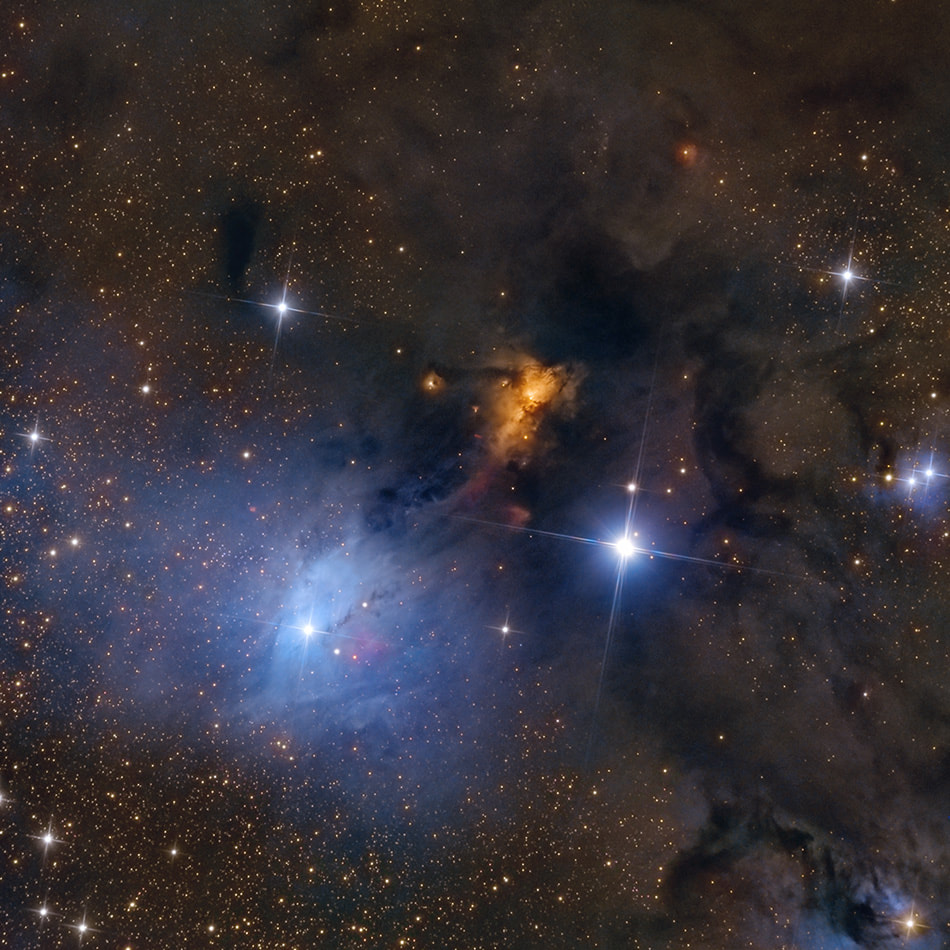
Nathaniel “Nat” Adderley Jr. (born May 23, 1955) is an American pop and rhythm and blues music arranger and pianist who spent much of his music career arranging as music director for Luther Vandross tours and contributed as co-songwriter on most of Vandross’s albums. His father Nat Adderley(1931–2000) was a composer and jazz cornet and trumpet player, while his uncle Cannonball Adderley (1928–1975) was a jazz alto saxophonist. Nat Adderley Jr. was born in Quincy, Florida on May 23, 1955. The scion of a famed jazz family, he grew up in Teaneck, New Jersey, moving to that suburban New York City community with his family when he was five years old. He started playing piano as a child and had his first song, “I’m on My Way”, recorded by his uncle Cannonball on the 1967 album Why Am I Treated So Bad! by the Cannonball Adderley Quintet when the young Nat Adderley was only 11 years old. While at the Fiorello H. LaGuardia High School of Music & Art and Performing Arts in New York City, Adderley first met Luther Vandross, who attended Taft High School in the Bronx. Adderley would end up spending much of his musical career with Vandross. He attended Yale University, graduating with a degree in African American studies.
While living in Houston, Texas, he was the music arranger for the 1981 album Never Too Much which became Vandross’s first hit with the title track, which reached number 33 on the Billboard Hot 100 and fourth on the dance charts. He continued working with Vandross, whom he called “a hilarious guy, a great employer, a great friend, and an incredible musician”, until the singer’s stroke in February 2003 that effectively ended his career.
Adderley has returned to his jazz roots, performing his own works, as well as tributes to both his father and uncle. He cites his influences as Chick Corea, John Coltrane and Thelonious Monk. In a 2009 interview with the Star-Ledger he said pianists “who are killing me” include Kenny Barron, Herbie Hancock, Cedar Walton and Joe Zawinul. As of 2009, Nat Adderley Jr is a resident of West Orange, New Jersey
more...Donald Moye, Jr. (born May 23, 1946), known as Famoudou Don Moye, is an American jazz percussionist and drummer. He is most known for his involvement with the Art Ensemble of Chicago and is noted for his mastery of African and Caribbean percussion instruments and rhythmic techniques.
Moye was born in Rochester, New York and performed in various drum and bugle corps (including the Rochester Crusaders) during his youth, as well as church choir. Moye has commented that he really “didn’t have an affinity for the bugle … and just kind of gravitated towards drums.” He also took violin lessons during this time. Moye was exposed to jazz at an early age since his mother worked for a local social club that had a jazz club next door that hosted musicians such as Kenny Burrell and Jimmy McGriff. His family was also musically inclined; his uncles played saxophones and his father played drums. Also, his mother used to take him to various performances as a child, such as “opera under the stars” and to see Mahalia Jackson.
more...Robert Arthur Moog (/moʊɡ/ MOHG; May 23, 1934 – August 21, 2005 NY, NY) was an American engineering physicist and pioneer of electronic music. He was the founder of Moog Music and the inventor of the first commercial synthesizer, the Moog synthesizer, debuted in 1964. This was followed in 1970 by a more portable model, the Minimoog, described as the most famous and influential synthesizer in history.
Moog created fundamental synthesizer concepts such as the pitch wheel, modularity, envelope generation, and voltage control. He is credited for helping bring synthesizers to a wider audience and influencing the development of popular music. His only patent was on his filter design; commentators have speculated that he would have become extremely wealthy had he patented his other innovations, but that their availability in the public domain helped the synthesizer industry flourish.
In 1971, Moog sold Moog Music to Norlin Musical Instruments, where he remained as a designer until 1977. In 1978, he founded the company Big Briar, and in 2002 renamed it Moog Music after buying back the rights to the name. In later years, Moog taught at the University of North Carolina at Asheville, and worked on designs for further instruments.
more...Alicia de Larrocha y de la Calle (23 May 1923 – 25 September 2009) was a Spanish pianist and composer. She was considered one of the great piano legends of the 20th century. Reuters called her “the greatest Spanish pianist in history” Time “one of the world’s most outstanding pianists”, and The Guardian “the leading Spanish pianist of her time”.
She won multiple Grammy Awards and a Prince of Asturias Award for the Arts. She is credited with bringing greater popularity to the compositions of Isaac Albéniz and Enrique Granados. In 1995, she became the first Spanish artist to win the UNESCO Prize.
Alicia de Larrocha was born in Barcelona, Catalonia, Spain. She began studying piano with Frank Marshall at the age of three. Both her parents were pianists and she was also the niece of pianists. Beginning her career at the age of three, she gave her first public performance at the age of five at the International Exposition in Barcelona. She performed her first concert at the age of six at the World’s Fair in Seville in 1929, and had her orchestral debut at the age of 11. By 1943, her performances were selling out in Spain. She began touring internationally in 1947, and in 1954 toured North America with the Los Angeles Philharmonic. In 1966, she engaged in a first strenuous tour of Southern Africa which proved so wildly popular that three further tours were completed In 1969, de Larrocha performed in Boston for the Peabody Mason Concert series.
more...Artie Shaw (born Arthur Jacob Arshawsky; May 23, 1910 – December 30, 2004 NY, NY) was an American clarinetist, composer, bandleader, actor and author of both fiction and non-fiction.
Widely regarded as “one of jazz’s finest clarinetists”, Shaw led one of the United States’ most popular big bands in the late 1930s through the early 1940s. Though he had numerous hit records, he was perhaps best known for his 1938 recording of Cole Porter‘s “Begin the Beguine.” Before the release of “Beguine,” Shaw and his fledgling band had languished in relative obscurity for over two years and, after its release, he became a major pop artist within short order. The record eventually became one of the era’s defining recordings. Musically restless, Shaw was also an early proponent of what became known much later as Third Stream music, which blended elements of classical and jazz forms and traditions. His music influenced other musicians, such as Monty Norman in England, with the vamp of the James Bond Theme, possibly influenced by 1938’s “Nightmare”.
Shaw also recorded with small jazz groups drawn from within the ranks of the big bands he led. He served in the US Navy from 1942 to 1944, during which time he led a morale-building band that toured the South Pacific. Following his discharge in 1944, he returned to lead a band through 1945. Following the breakup of that band, he began to focus on other interests and gradually withdrew from the world of being a professional musician and major celebrity, although he remained a force in popular music and jazz before retiring from music completely in 1954.
https://www.youtube.com/watch?v=ykEc3LczXhI
more...While hunting for glass projects primarily to repair, I ran across this very unusual piece. The collector practically donated it to me. As soon as I walked in my front door I immediately knew this window was the new Diego Memorial object. The old memorial with Diegos ashes, toys, pics, objects of Diego were full of dust and very painful memories withering away. The new window brings new life into Diegos life. How wonderful.
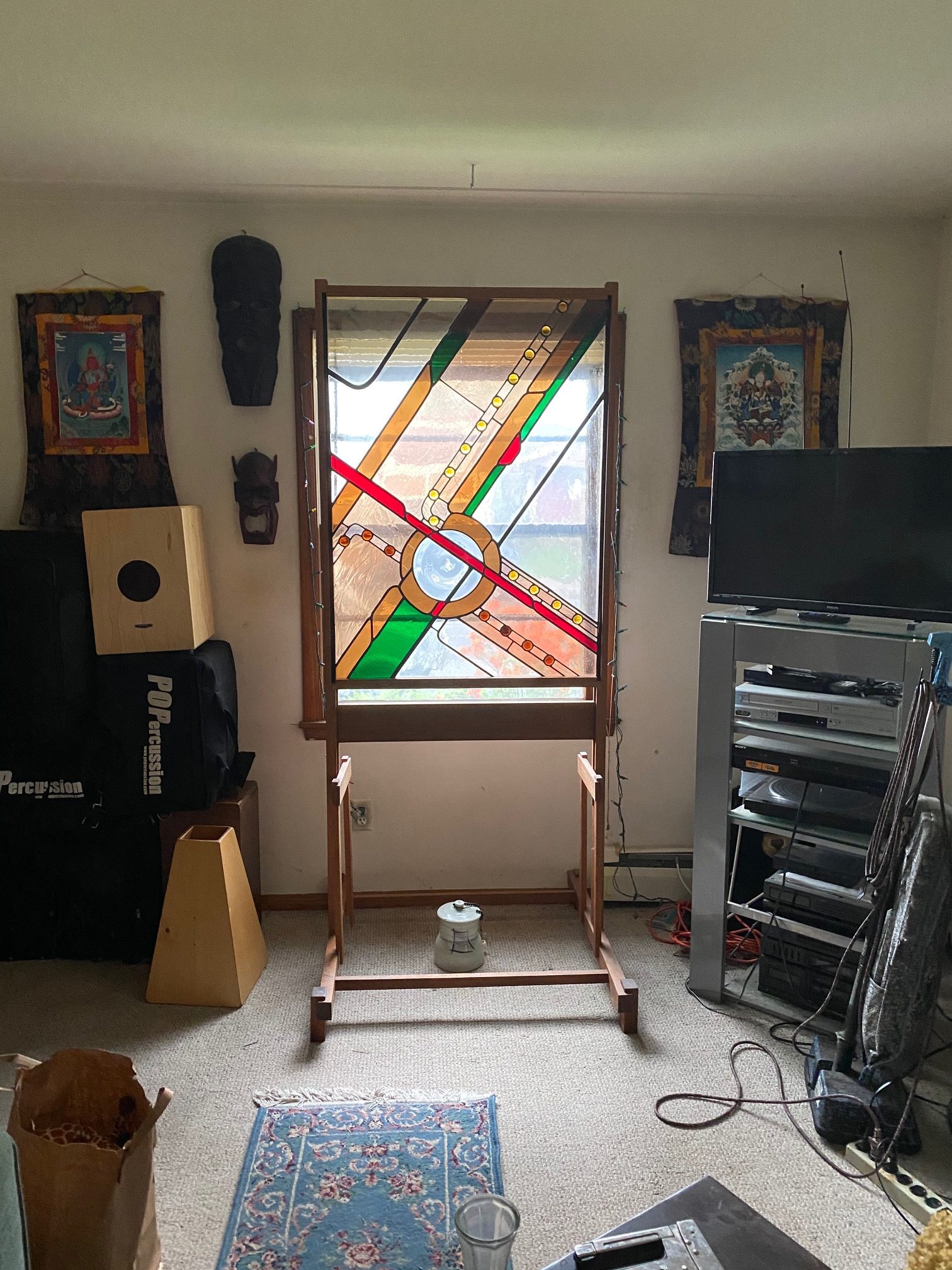
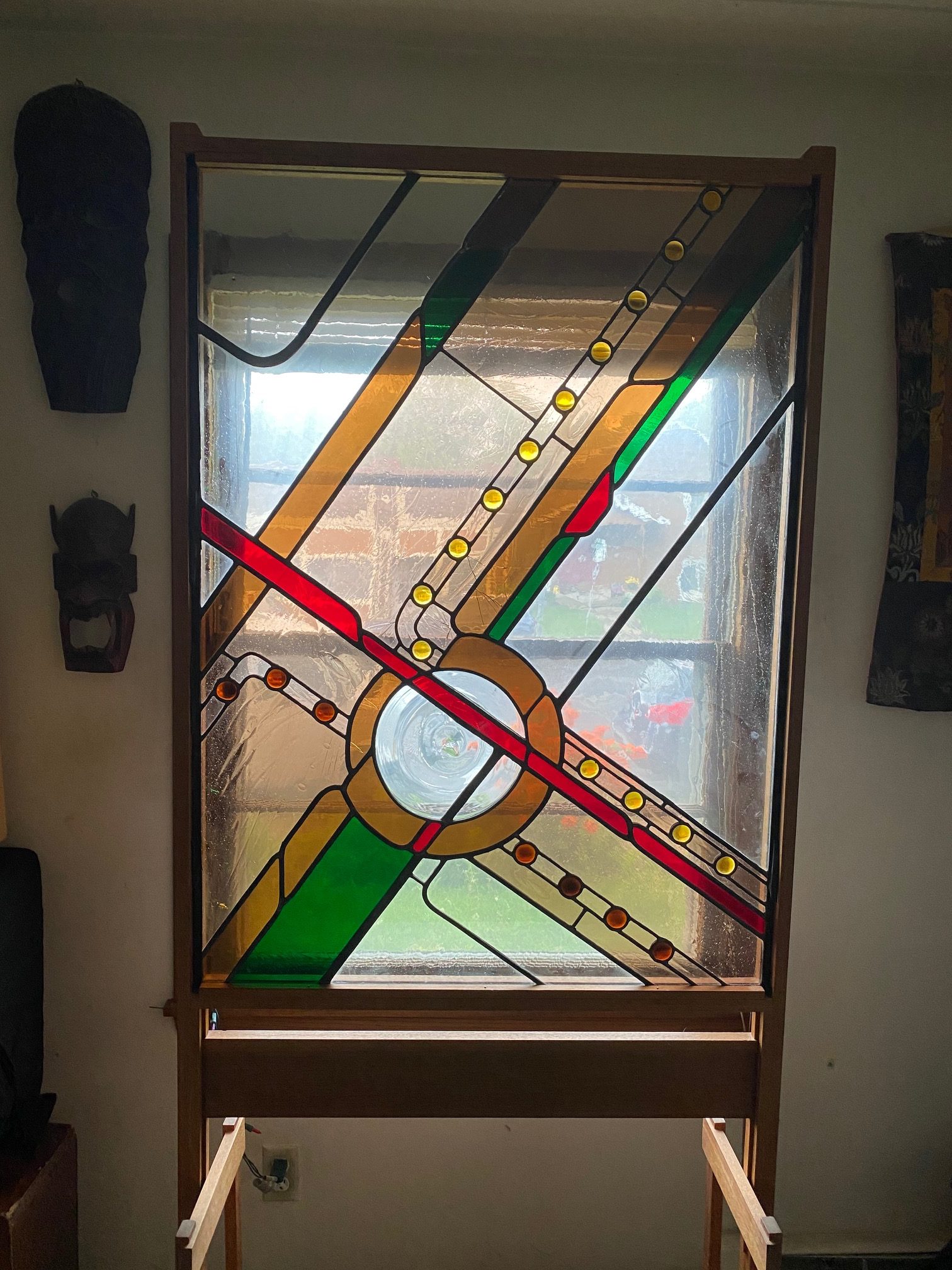
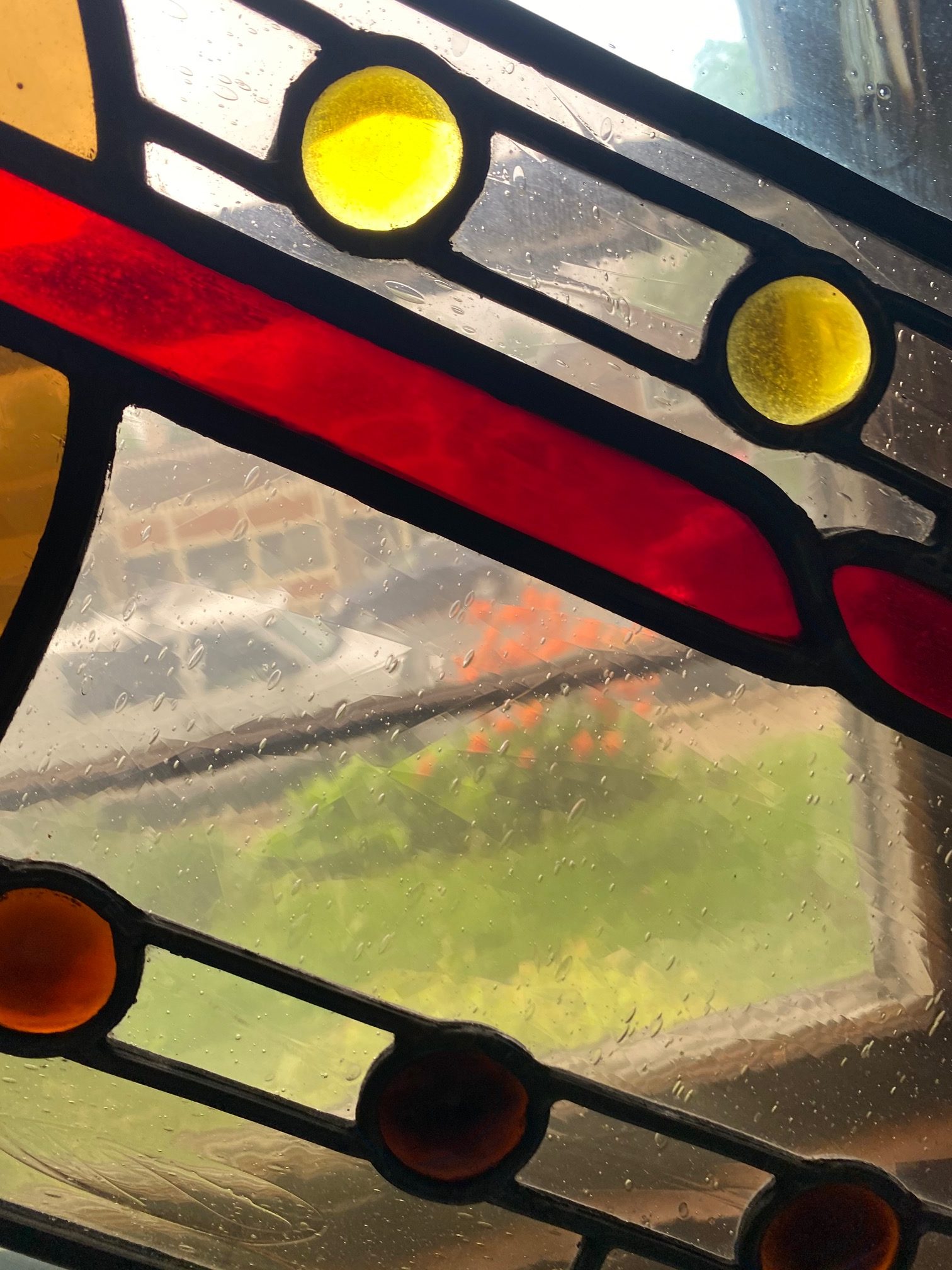
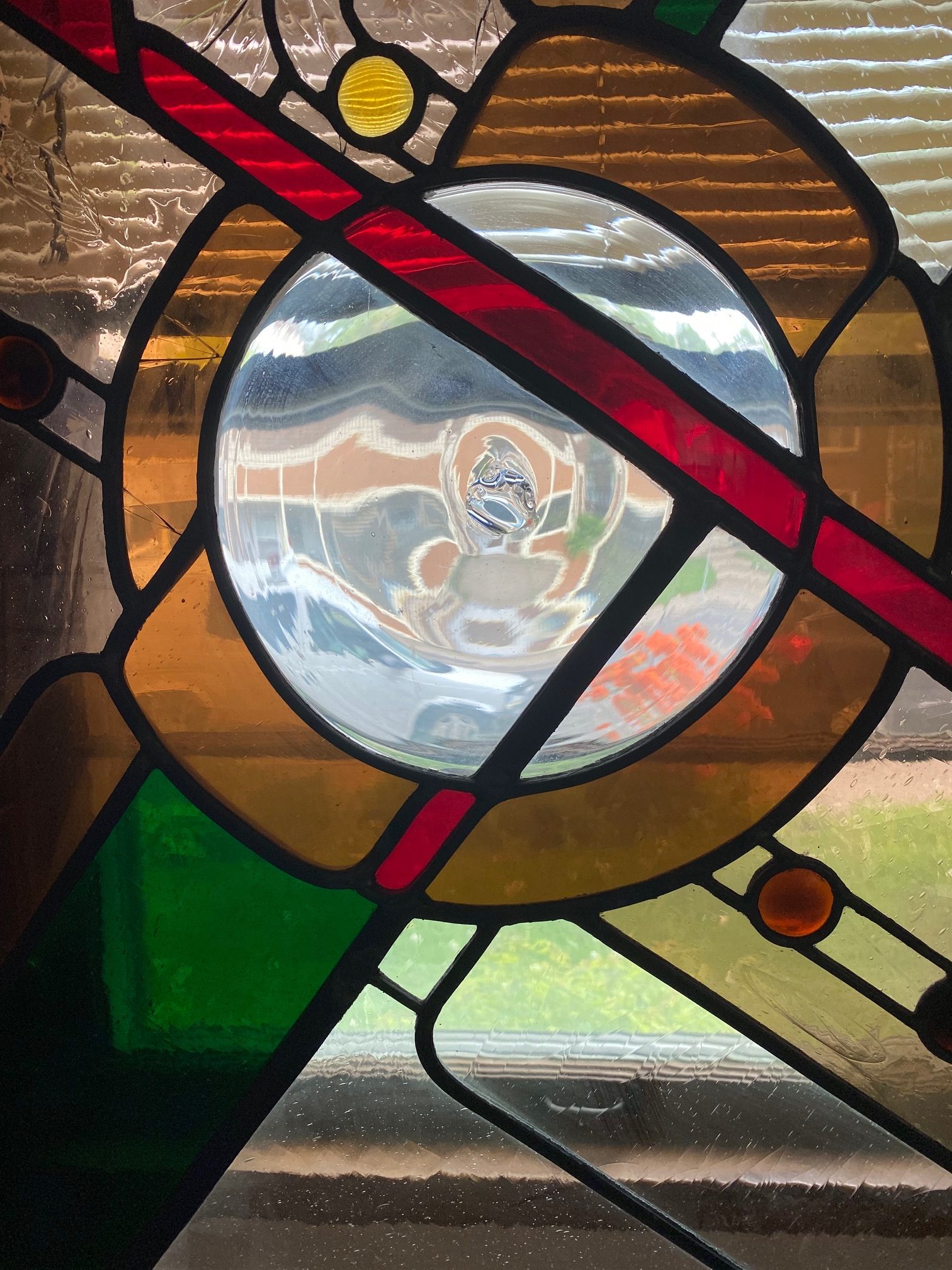
more...
Near the heart of the Virgo Galaxy Cluster the string of galaxies known as Markarian’s Chain stretches across this deep telescopic field of view. Anchored in the frame at bottom center by prominent lenticular galaxies, M84 (bottom) and M86, you can follow the chain up and to the right. Near center you’ll spot the pair of interacting galaxies NGC 4438 and NGC 4435, known to some as Markarian’s Eyes. Its center an estimated 50 million light-years distant, the Virgo Cluster itself is the nearest galaxy cluster. With up to about 2,000 member galaxies, it has a noticeable gravitational influence on our own Local Group of Galaxies. Within the Virgo Cluster at least seven galaxies in Markarian’s Chain appear to move coherently, although others may appear to be part of the chain by chance.
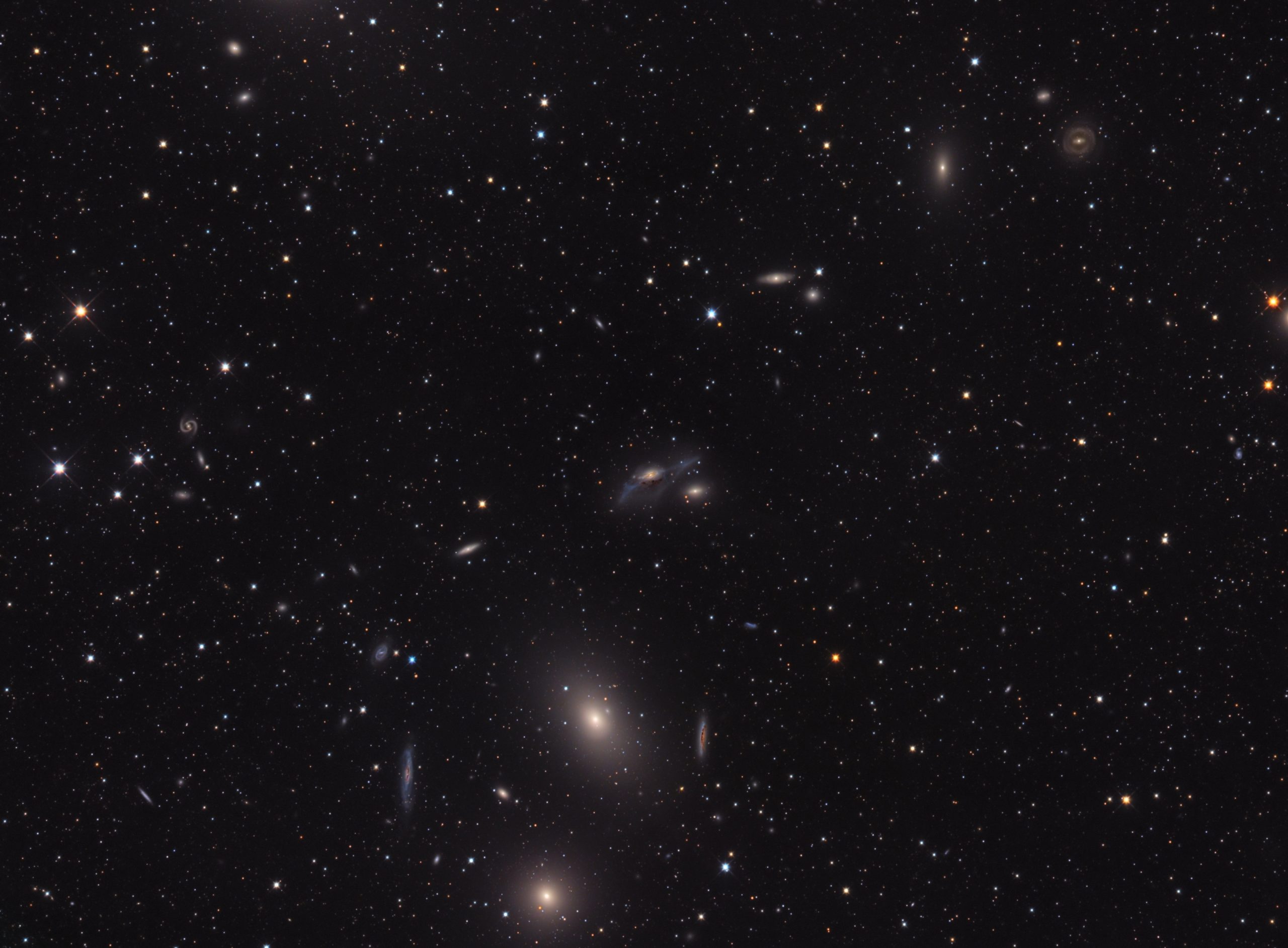
Ian Robertson Underwood (born May 22, 1939) is a woodwind and keyboards player, known for his work with Frank Zappa and the Mothers of Invention.
Underwood graduated from The Choate School in 1957 and Yale University with a bachelor’s degree in composition in 1961 and a master’s degree in composition at UC Berkeley in 1966. He began his career by playing San Francisco Bay Area coffeehouses and bars with his improvisational group, the Jazz Mice, in the mid 1960s before he became a member of Frank Zappa and the Mothers of Invention in 1967 for their third studio album, We’re Only in It for the Money. He speaks on Uncle Meat; on the track “Ian Underwood Whips It Out” he relates how he first met Zappa and demonstrated his capabilities on the saxophone at Zappa’s invitation. Underwood later worked with Frank Zappa on his solo recordings, including 1969’s Hot Rats. He married Ruth Komanoff (Underwood), marimbist/percussionist from the Mothers of Invention in May 1969. Underwood left the Mothers of Invention in September 1973. He and Ruth divorced in 1986.
After his lengthy career with Frank Zappa, he pursued a career as a session keyboardist. Underwood has since been proficient on the Minimoog synthesizer, mostly in film. He has been credited in recordings for Quincy Jones, Barbra Streisand, Ronee Blakley, Hugh Cornwell, Freddie Hubbard, Jean-Luc Ponty, Herb Alpert, Hugh Masekela, Peggy Lee, Dolly Parton, Chicago, Janet Jackson, Dave Grusin, Jefferson Airplane, Frankie Valli, the Carpenters, James Ingram, and Barry Manilow. Underwood was also one of the musicians who played the main title theme for the 1980s hit series Knight Rider. Underwood was the uncredited producer of the debut album by Alice Cooper, Pretties For You, in 1969.
more...Richard Alan Berk (May 22, 1939 – February 8, 2014) was an American jazz drummer and bandleader.
A native of San Francisco, California, he studied at the Berklee College of Music and played in the Boston area early in the 1960s. In 1962 he moved to New York City and played with Ted Curson and Bill Barron in a quintet from 1962 to 1964. Following this he played with Charles Mingus, Mose Allison, Freddie Hubbard, and Walter Bishop, Jr., among others. He moved to Los Angeles late in the 1960s, where he played with Milt Jackson, George Duke, Cal Tjader, Jean-Luc Ponty, and Blue Mitchell. He founded the Jazz Adoption Agency in the early 1980s, playing into the 2000s; the group included Andy Martin, Mike Fahn, Nick Brignola, Jon Nagorney, Keith Saunders, Tad Weed, and John Patitucci. He died in 2014 at the age of 74.
more...Le Sony’r Ra (born Herman Poole Blount, May 22, 1914 – May 30, 1993), better known as Sun Ra, was an American jazz composer, bandleader, piano and synthesizer player, and poet known for his experimental music, “cosmic” philosophy, prolific output, and theatrical performances. For much of his career, Ra led “The Arkestra,” an ensemble with an ever-changing name and flexible line-up.
Born and raised in Alabama, Blount became involved in the Chicago jazz scene during the late 1940s. He soon abandoned his birth name, taking the name Le Sony’r Ra, shortened to Sun Ra (after Ra, the Egyptian God of the Sun). Claiming to be an alien from Saturn on a mission to preach peace, he developed a mythical persona and an idiosyncratic credo that made him a pioneer of Afrofuturism.Throughout his life he denied ties to his prior identity saying, “Any name that I use other than Ra is a pseudonym.”
His widely eclectic and avant-garde music echoed the entire history of jazz, from ragtime and early New Orleans hot jazz, to swing music, bebop, free jazz and fusion. His compositions ranged from keyboard solos to works for big bands of over 30 musicians, along with electronic excursions, songs, chants, percussion pieces, and anthems. From the mid-1950s until his death, Ra led the musical collective The Arkestra (which featured artists such as Marshall Allen, John Gilmore and June Tyson throughout its various iterations). Its performances often included dancers and musicians dressed in elaborate, futuristic costumes inspired by ancient Egyptian attire and the Space Age. (Following Ra’s illness-forced retirement in 1992, the band remained active as The Sun Ra Arkestra, and, as of 2018, continues performing under the leadership of veteran Ra sideman Marshall Allen.) Though his mainstream success was limited, Sun Ra was a prolific recording artist and frequent live performer, and remained influential throughout his life for his music and persona. He is now widely considered an innovator; among his distinctions are his pioneering work in free improvisation and modal jazz and his early use of electronic keyboards and synthesizers. Over the course of his career, he recorded dozens of singles and over one hundred full-length albums, comprising well over 1,000 songs, making him one of the most prolific recording artists of the 20th century.
He was born Herman Blount on May 22, 1914, in Birmingham, Alabama, as discovered by his biographer, John F. Szwed, and published in his 1998 book. He was named after the popular vaudeville stage magician Black Herman, who had deeply impressed his mother. He was nicknamed “Sonny” from his childhood, had an older sister and half-brother, and was doted upon by his mother and grandmother.
For decades, very little was known about Sun Ra’s early life, and he contributed to its mystique. As a self-invented person, he routinely gave evasive, contradictory or seemingly nonsensical answers to personal questions, and denied his birth name. He speculated, only half in jest, that he was distantly related to Elijah Poole, later known as Elijah Muhammad, leader of the Nation of Islam. His birthday for years remained unknown, as his claims ranged from 1910 to 1918. Only a few years before his death, the date of Sun Ra’s birth was still a mystery. Jim Macnie’s notes for Blue Delight (1989) said that Sun Ra was believed to be about 75 years old. But Szwed was able to uncover a wealth of information about his early life and confirmed a birth date of May 22, 1914. As a child, Blount was a skilled pianist. By the age of 11 or 12, he was composing and sight reading music. Birmingham was an important stop for touring musicians and he saw prominent musicians such as Fletcher Henderson, Duke Ellington, and Fats Waller, and others now forgotten. Sun Ra once said, “The world let down a lot of good musicians”.
In his teenage years, Blount demonstrated prodigious musical talent: many times, according to acquaintances, he went to big band performances and then produced full transcriptions of the bands’ songs from memory. By his mid-teens, Blount was performing semi-professionally as a solo pianist, or as a member of various ad hoc jazz and R&B groups. He attended Birmingham’s segregated Industrial High School (now known as Parker High School), where he studied under music teacher John T. “Fess” Whatley, a demanding disciplinarian who was widely respected and whose classes produced many professional musicians. Though deeply religious, his family was not formally associated with any Christian church or sect. Blount had few or no close friends in high school but was remembered as kind-natured and quiet, an honor roll student, and a voracious reader. He took advantage of the Black Masonic Lodge as one of the few places in Birmingham where African Americans had unlimited access to books. Its collection on Freemasonry and other esoteric concepts made a strong impression on him. By his teens, Blount suffered from cryptorchidism. It left him with a nearly constant discomfort that sometimes flared into severe pain. Szwed suggests that Blount felt shame about it and the condition contributed to his isolation.
more...More Posts
- World Music Bombino
- Daily Roots Lee Scratch Perry
- Happy Groundhog Day 2024
- Cabaret the Musical 2024
- Cosmos IC 410
- Graham Nash
- Stan Getz
- Sonny Stitt
- Flamenco Fridays Camerón y Tomatito
- Daily Roots J Jones
- Cosmos NGC 1365
- Joe Sample
- Sadao Watanabe
- Tricky Sam Nanton
- Langston Hughes
- World Music Trio Ravnogor
- Daily Roots Diggory Kenrick & The Aggrovators
- Cosmos Orion
- Franz Schubert
- Charlie Musselwhite